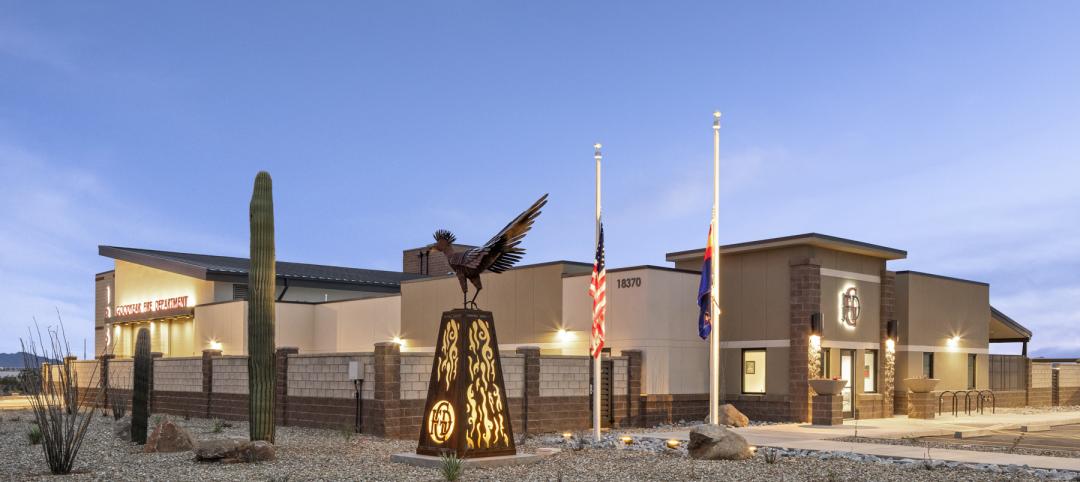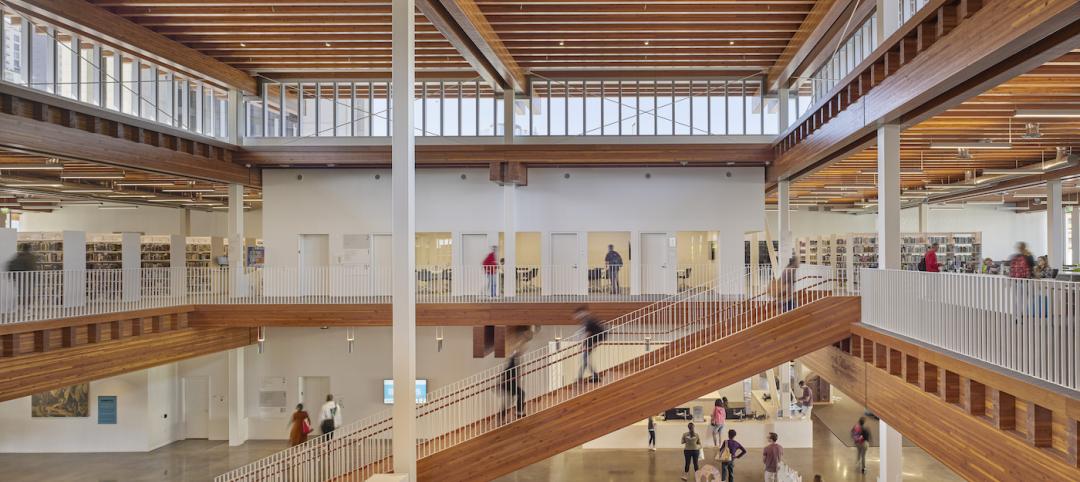
The Robert F. Kennedy Main Justice Building houses the U.S. Attorney General's office, the Justice Department headquarters, and the largest historic art collection of any GSA-built facility, so its renovation had to be performed with the utmost care.
 |
| The building’s art collection required the services of a full-time art conservator and a special “art protection package” for subcontractor bidding. PHOTO: BORIS FELDBLYUM PHOTOGRAPHY |
Offices housing hundreds of lawyers and staff had to remain operational during the construction of a brand new $3.1 million conference center and data room, the restoration of the main library and executive suites, and the installation of a new M/E/P system. All this had to be done while maintaining the highest levels of security and dealing with hazardous materials.
BD+C Reconstruction Awards judge Walker C. Johnson, FAIA, Johnson Lasky Architects, Chicago, assessed the restoration job as “a very difficult project, well executed.”
To best preserve the building's extensive art collection, protective shields were placed around the murals, sculptures, and plaster reliefs. Temperature, humidity, and dust controls were also installed, making the collection much better equipped to stand the test of time.
Due to the highly sensitive nature of the facility itself, extra security measures were employed throughout the project. Construction personnel were classified into three tiers and were permitted access to specific building areas based on these three levels of security clearance.
An extensive asbestos abatement effort was conducted, along with the removal of lead paint and careful handling of mercury vapor lamps containing PCBs. The construction manager, Gilbane Building Company, established a stop-work rule that brought construction to a halt the moment any hazardous material was uncovered.
Conservation efforts throughout the construction process ultimately returned close to $1 million to the GSA's purse.
For instance, instead of completely demolishing the existing courtyard plaza and garage structures, the design consultants determined that it was possible to renovate these features, thereby utilizing 95% of existing building materials. The courtyard's cobblestone blocks were removed, cleaned, refurbished, and reinstalled. The foundation of the courtyard's original fountain was preserved, while its pipes and pumps were replaced. And only the concrete with questionable integrity around the facility's garage beams was removed and repaired, rather than replacing all the concrete.
As for the facility's plaza deck, the Building Team tested the concrete structure's integrity to determine which sections could be repaired instead of being entirely rebuilt. Consequently, 14,520 tons of waste material were diverted from landfill.
The original foundation and structure of the building's entrance was preserved, saving another 110 tons of waste materials and decreasing the risk of penetrating a sensitive waterproofing membrane system.
Gilbane scored additional savings by utilizing a mechanism called early buyout. Taking advantage of the purchasing power of the entire four-phase construction job, Gilbane was able to secure prices early on in the project that otherwise would have been spent covering the escalating costs of building materials.
In sum, the project came in $4.2 million under budget, enabling the GSA to pursue additional work, including restoration and re-pointing of the limestone exterior, roof repair and replacement, ornate painting and plaster restoration, additional hazardous materials abatement, and fire code upgrades.
Related Stories
Giants 400 | Dec 5, 2021
2021 Justice Facility Sector Giants: Top architecture, engineering, and construction firms in the U.S. justice facility/public safety sector
Turner Construction, DLR Group, AECOM, and Stantec top BD+C's rankings of the nation's largest architecture, engineering, and construction firms for justice facility/public safety buildings work, including correctional facilities, fire stations, jails, police stations, and prisons, as reported in the 2021 Giants 400 Report.
Justice Facilities | Sep 24, 2021
More than justice for all
Public safety buildings are paying greater attention to occupant well-being.
Giants 400 | Aug 30, 2021
2021 Giants 400 Report: Ranking the largest architecture, engineering, and construction firms in the U.S.
The 2021 Giants 400 Report includes more than 130 rankings across 25 building sectors and specialty categories.
Resiliency | Aug 19, 2021
White paper outlines cost-effective flood protection approaches for building owners
A new white paper from Walter P Moore offers an in-depth review of the flood protection process and proven approaches.
Resiliency | Jun 24, 2021
Oceanographer John Englander talks resiliency and buildings [new on HorizonTV]
New on HorizonTV, oceanographer John Englander discusses his latest book, which warns that, regardless of resilience efforts, sea levels will rise by meters in the coming decades. Adaptation, he says, is the key to future building design and construction.
Justice Facilities | Jun 15, 2021
A Philadelphia suburb sees its future in a municipal campus with an expanded courthouse
Versions of this civic project have been in the works since at least 2015.
Digital Twin | May 24, 2021
Digital twin’s value propositions for the built environment, explained
Ernst & Young’s white paper makes its cases for the technology’s myriad benefits.
Market Data | Feb 24, 2021
2021 won’t be a growth year for construction spending, says latest JLL forecast
Predicts second-half improvement toward normalization next year.
Giants 400 | Dec 16, 2020
Download a PDF of all 2020 Giants 400 Rankings
This 70-page PDF features AEC firm rankings across 51 building sectors, disciplines, and specialty services.
Government Buildings | Nov 13, 2020
Tax shortfalls nip government projects in the bud
Federal contracts are proceeding, but states and cities are delaying, deferring, and looking for private investment.






![Oceanographer John Englander talks resiliency and buildings [new on HorizonTV] Oceanographer John Englander talks resiliency and buildings [new on HorizonTV]](/sites/default/files/styles/list_big/public/Oceanographer%20John%20Englander%20Talks%20Resiliency%20and%20Buildings%20YT%20new_0.jpg?itok=enJ1TWJ8)









